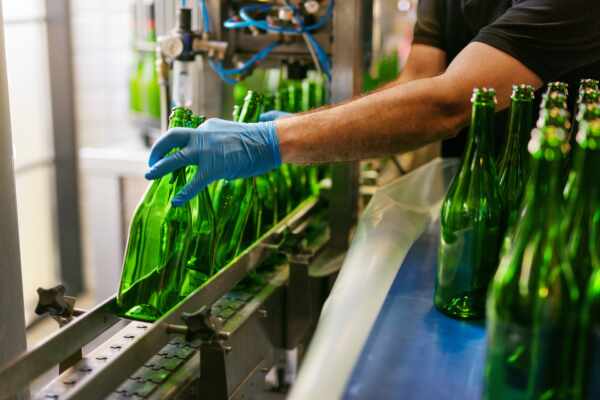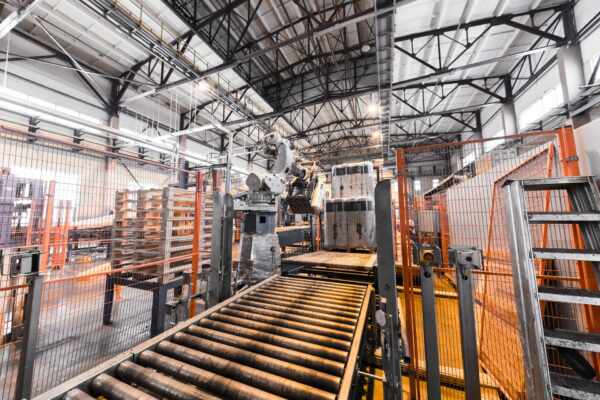In today’s fast-paced industrial world, businesses must continually adapt and optimise their processes to remain competitive and productive. One of the fundamental aspects of maintaining efficiency in your facility is ensuring the optimal performance and longevity of your conveyor system. Conveyor belts play a crucial role in various industries, including food manufacturing, packaging, and mining. So, effective conveyor system maintenance is vital in preventing interruptions to production and minimising costly downtime.
In this article, we’ll explore the best maintenance practices and tips to ensure the optimal performance and longevity of your conveyor system. We’ll cover essential topics such as regular inspections and cleaning, lubrication and belt tension adjustments, spare parts management, and knowing when to replace or repair a belt. By implementing these maintenance strategies, you can significantly reduce the likelihood of unexpected breakdowns and improve the overall efficiency and cost-effectiveness of your material handling system.
At Change Parts Pty Ltd, we understand the importance of conveyor system maintenance and are committed to helping our clients achieve the highest levels of performance and longevity from their systems. Our industry experience and expertise in conveyor belts enable us to provide practical, reliable, and cost-effective solutions for all your conveyor system needs.
Read on to learn how implementing best practices and working with trusted conveyor solution providers can help you maximise the return on investment for your conveyor system and establish a reputation for reliability and efficiency in your industry.
Conveyor System Maintenance: Tips for Ensuring Optimal Performance and Longevity
1. Regular Inspections and Cleaning
The foundation of effective conveyor system maintenance lies in consistent and thorough inspections. By examining your system regularly, you can identify potential issues, ensure optimal belt alignment, and maintain proper belt tension before they escalate into significant problems.
During inspections, it’s crucial to focus on critical components, such as rollers, bearings, and drives, as well as checking for signs of wear on the belt itself. Additionally, regular cleaning is essential, especially in industries like food manufacturing, where strict hygiene standards must be maintained. By keeping your conveyor system free from debris, dirt, and contaminants, you can significantly improve its efficiency and longevity.
2. Lubrication and Belt Tension Adjustments
Ensuring proper lubrication of essential conveyor system components, such as bearings, and maintaining appropriate belt tension play a vital role in prolonging the life of your conveyor belts. Adequate lubrication reduces friction and wear, ensuring smooth operation and minimising the risk of premature component failure. It’s crucial to consult your conveyor system’s manual for specific lubrication recommendations and schedules.
Additionally, monitoring and adjusting belt tension as needed can help prevent belt slippage, misalignment, and premature wear. A well-tensioned belt ensures efficient power transmission and reduces the risk of component damage.
3. Spare Parts Inventory Management
Having a well-organised spare parts inventory enables you to respond quickly to unexpected breakdowns and minimise production downtime. Keep a stock of essential spare parts, such as belt sections, rollers, bearings, and motors, so you can rapidly address any system malfunctions.
Investing in high-quality replacement parts and working with trusted conveyor solutions providers can not only prolong the life of your conveyor system but also contribute to its overall efficiency.
4. Knowing When to Replace or Repair a Belt
One of the most critical aspects of conveyor system maintenance is knowing when to replace or repair a damaged belt. Factors such as the extent of wear, the risk of unscheduled downtime, and the potential impact on overall system efficiency should be considered when making this decision.
In some cases, minor repairs may suffice to extend the life of the belt and maintain system efficiency. However, if the damages are extensive or the belt has reached the end of its service life, investing in a replacement may be the most cost-effective approach.
The Importance of Partnering with Trusted Conveyor Solution Providers
Implementing these conveyor system maintenance tips can significantly enhance the performance and longevity of your belt and overall system. However, partnering with trusted conveyor solution providers who possess extensive industry experience and expertise can make a crucial difference in optimising your conveyor system maintenance practices.
Trusted providers can:
1. Offer valuable guidance and resources to help maintain your system efficiently.
2. Recommend and supply high-quality replacement parts tailored to your specific conveyor system.
3. Conduct professional assessments and troubleshoot any issues encountered during maintenance.
Conclusion
Effective conveyor system maintenance is paramount to ensure the optimal performance and longevity of your system, reducing downtime and improving overall efficiency. By incorporating regular inspections, cleaning, proper lubrication, and belt tension adjustments into your maintenance routine and by partnering with trusted conveyor solution providers, you can safeguard the long-term success of your material handling process.
As industry-leading conveyor solutions experts, we pride ourselves on delivering unparalleled service and support for all your conveyor system needs. From high-quality replacement parts to tailored guidance and resources, we’re here to help you achieve the highest level of performance and longevity from your conveyor system. Contact Change Parts Pty Ltd today to discover how we can make a difference in your conveyor belt system maintenance and optimisation.




